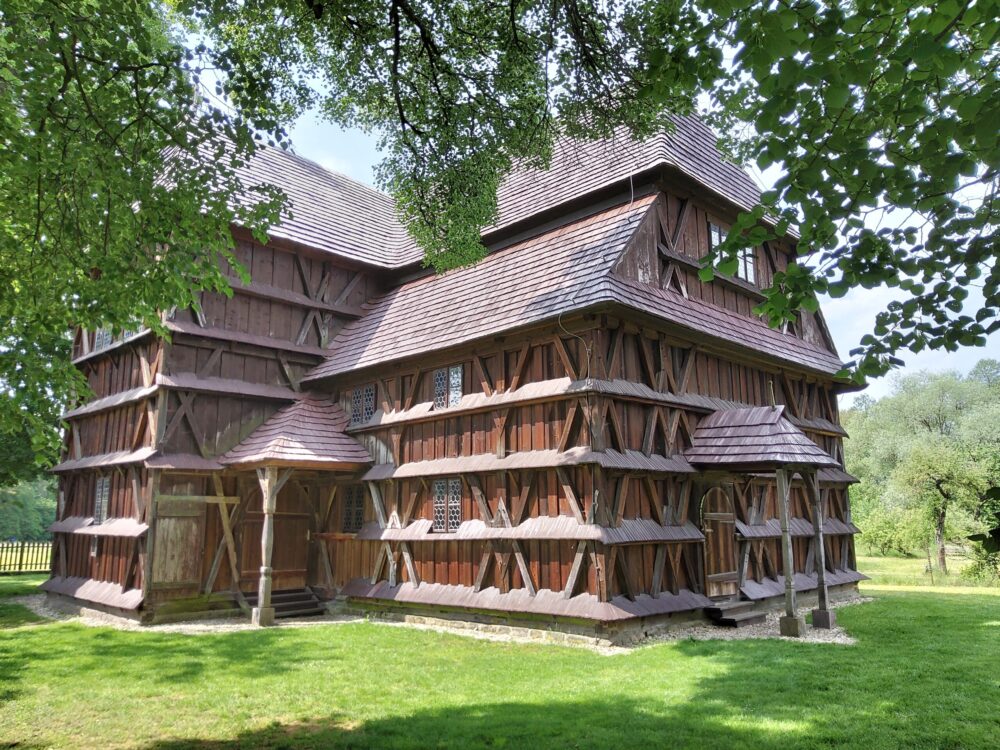
The Articular Wooden Church at Hronsek
Leaving was uneventful, riding south along the road parallel to the motorway, which wasn’t too busy and with wide vistas. We turned off it for minor roads which led to a long paved cycle path along an embankment, similar to the one into Krakow but closer to the river and without the bothersome wind. This took us into the busy centre of Zvolen. The path continued along the river but we had to leave it here to strike out to the west along a busy road leading to the motorway.
Once we’d passed the junction the traffic eased and we enjoyed a quiet run for a long stretch until a motorway exit delivered more traffic. There were no picnic benches but we came upon an isolated cafe catering for passing traffic and cooled down with some refreshing kofola. We left this road a few kilometres before Banska Stiavnica for a quiet ride into the town, winding our way to Vila Magnolia, whose cobbled drive was so steep that we had to carry our bags up separately then push the bikes up.
It was good to arrive before 17:00 for a change, we needed to find somewhere to eat and to look round the town. Bistro Dumbier fed us well, then we toured the quiet streets of the oldest mining town in Slovakia, established in the 13th century, although evidence of mining dates back to the late Bronze Age. While it served as an important town during the Middle Ages, the surviving urban centre was formed during the 16th century. It is characterized by the grand Late Gothic and Renaissance burgher houses, the town hall, and the Late Gothic Church of Saint Catherine. In the same era, a fortification system was built which has visible remains in the fortress of the Old Castle and the Renaissance watchtower of the New Castle. Unfortunately a serious fire in March seriously damaged some of the old buildings in the centre.